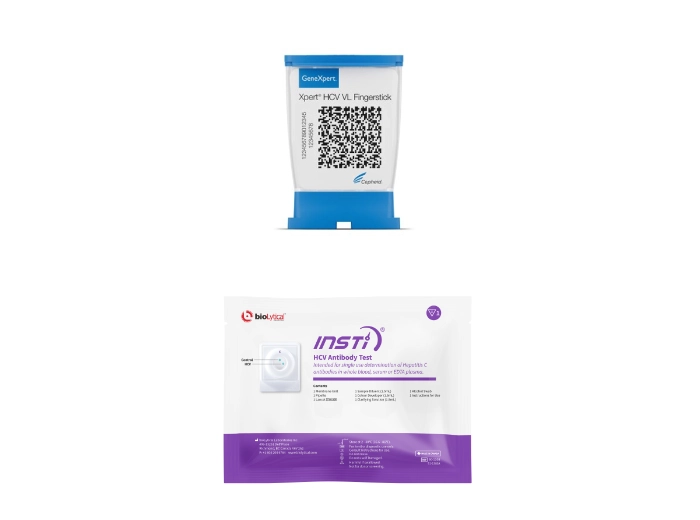Your reference for hepatitis C in Quebec

Point-of-Care HCV Screening for MSM in a Festive Setting
Article original de référence : https://www.frontiersin.org/journals/public-health/articles/10.3389/fpubh.2024.1478195/full
Summary translated into French (source PNMVH)
January 16, 2025
Although sexual transmission is less frequent, the serological prevalence of HCV infection (i.e. the presence of anti-HCV antibodies) among men who have sex with men (MSM), particularly those co-infected with HIV-1, is higher than in the general population (4%). In addition, the incidence of HCV infection has increased since 2000, particularly among HIV-1-positive MSM and HIV-negative MSM using pre-exposure prophylaxis (PrEP or PrEP). In addition, the use of recreational substances during sex is common in these populations, and is often associated with risky sexual behavior (Fierer, D. S., & Schinkel, J., The Journal of Infectious Diseases, 2023). A large proportion of HCV cases remain undetected, particularly among people navigating outside the usual healthcare systems, preventing them from accessing treatment with direct-acting antiviral agents (DAAs). Therefore, in addition to prevention and treatment, identifying unknown and untreated HCV cases among the most affected populations is essential to eliminating HCV infection.
The aim of this study (Albertos, S., & al., Frontiers in Public Health2024) was to :
- assess the feasibility and acceptability of large-scale (population-wide) point-of-care HCV screening on the street using rapid tests,
- determine the characteristics of the population included in the analysis,
- determine the prevalence of HCV infection in this population.
As a reminder, point-of-care HCV testing allows samples to be collected, analyzed and results to be obtained right where they were taken (by finger prick) - in other words, without the sample having to be sent to the laboratory. Rapid point-of-care tests provide results in a matter of minutes.
This is a cross-sectional (data collected at a given time) community-based study including MSM who attended the three most important LGTB+ events in the city of Sitges (Catalonia, Spain) in 2022. Points of service were set up in tents on the street, and participants were invited to perform a voluntary HCV antibody self-test. Participants were informed of the study, gave their consent, completed a test for identification of risk practices (TIRP), and finally performed the OraQuick® HCV test on a saliva sample. Participants with positive results were then offered an HCV test using the Xpert HCV Fingerstick® (FS) test on a drop of blood. The Xpert HCV FS test is an in vitro reverse transcription-polymerase chain reaction (RT-PCR) assay for the detection and quantification of hepatitis C virus RNA (HCV-RNA).
The “TIRP” is an 8-question questionnaire based on the European MSM Internet Survey (EMIS) of MSM behaviors, and has previously been used to assess the relationship between certain risk practices and HCV infection. Each question (or item) has two possible answers (yes: 1 point, and no: 0 point), with possible final scores ranging from 0 to 8 points. A score ≥1 is considered a risk of SSTI infection. Participants were also asked to answer the following general question: “What is your perceived risk of STBBI”. They could self-assess their perception of risk on a scale from 0 to 10.
Results: all had undetectable HCV-RNA levels
According to the results, 1249 adults participated in the large-scale screening, of whom 1197 (95.8%) were identified as belonging to the HARSAH group. The screening rate was 39 participants/hour. Only four participants - or 0.32%, were positive for anti-HCV antibodies, but all had undetectable levels of HCV-RNA.. The median age (IQR) of the participants was 44. Most were European, and 13% said they didn't know their HCV status.
A total of 1185 adults returned their TIRP questionnaire. The mean TIRP score was 1.40 (n = 1062), with question 1 (“Have you had receptive anal intercourse without a condom in the last 6 months?”) showing the highest rate of positive responses (53.3%), followed by question 8 (“Do you use PrEP regularly?”) with a positive response rate of 32.39%. The majority of participants (67.41%) reported taking some risk (n = 716 with TIRP scores ≥ 1), while a third (32.58%) reported no risk (i.e. TIRP score = 0). For self-perceived STI risk, the mean score was 3 out of 10 (n = 969).
A realistic strategy
In conclusion, the strategy of testing at the point of care on the street, using rapid oral self-testing at festive or recreational events bringing together MSM, was considered feasible, well accepted and rapid, according to the authors - it reached 36 to 39 individuals per hour. They specify that it could be a useful strategy for reaching other populations at risk of HCV infection.




